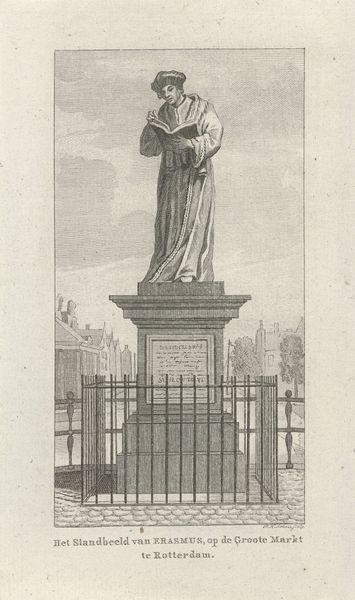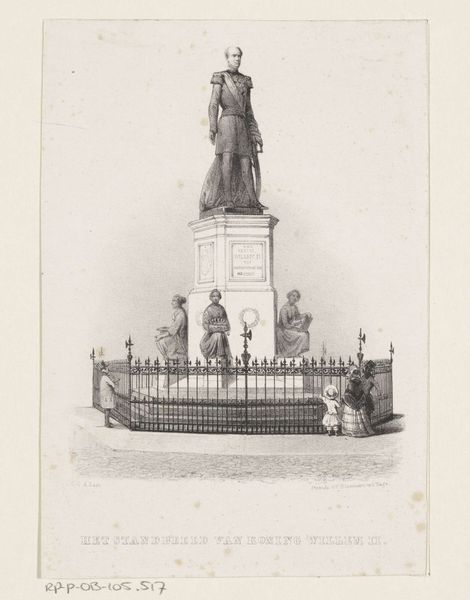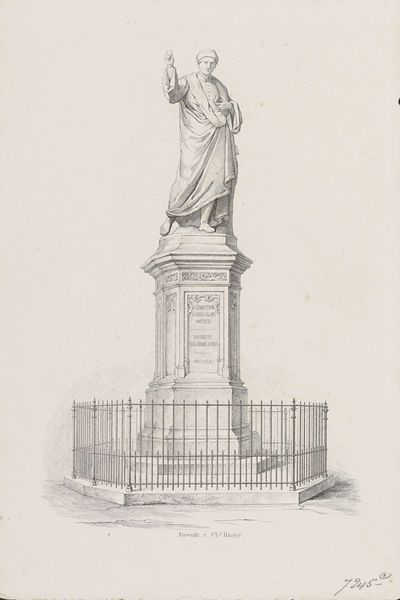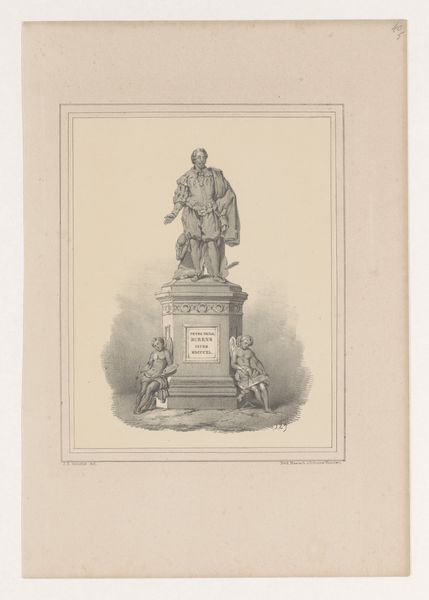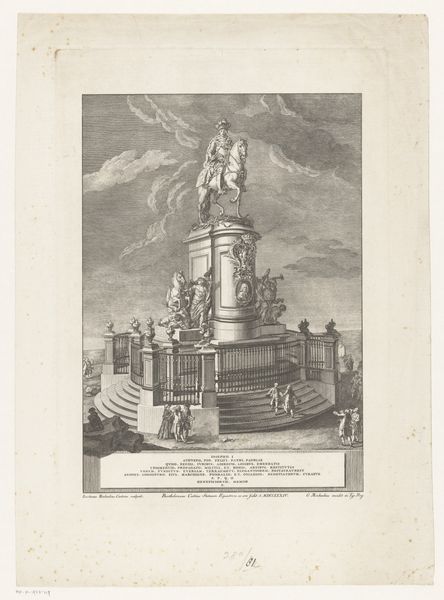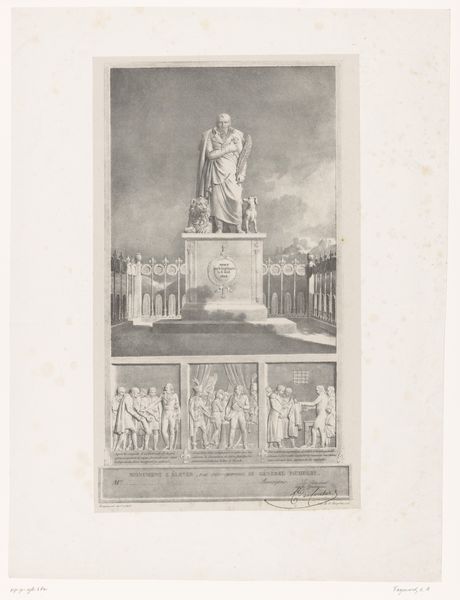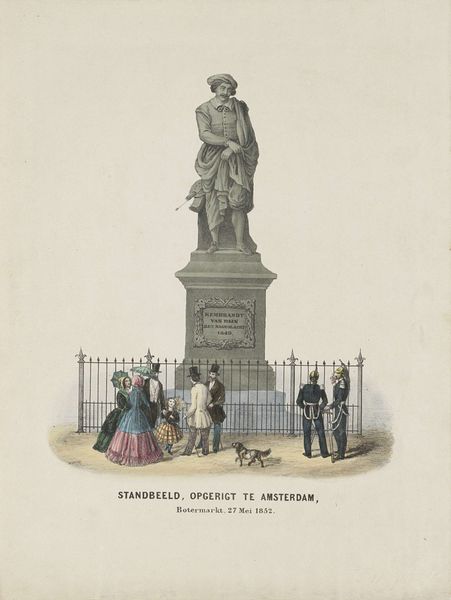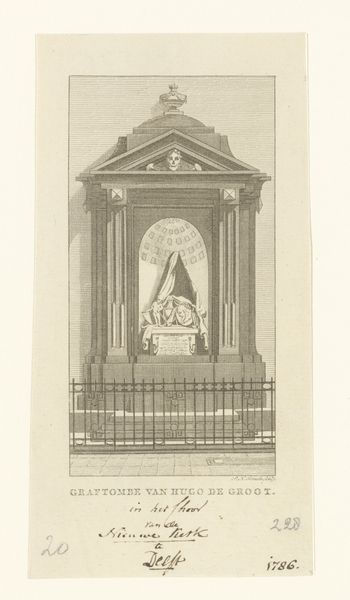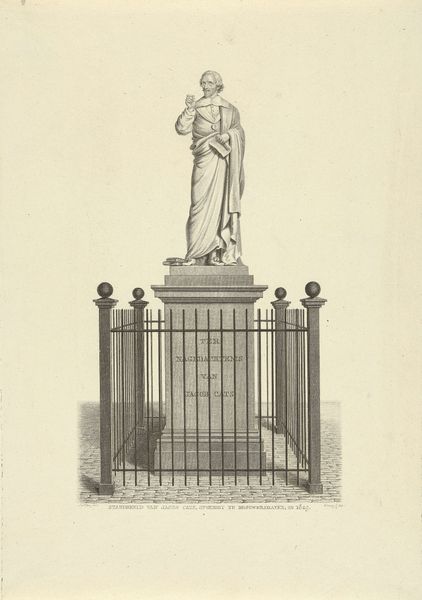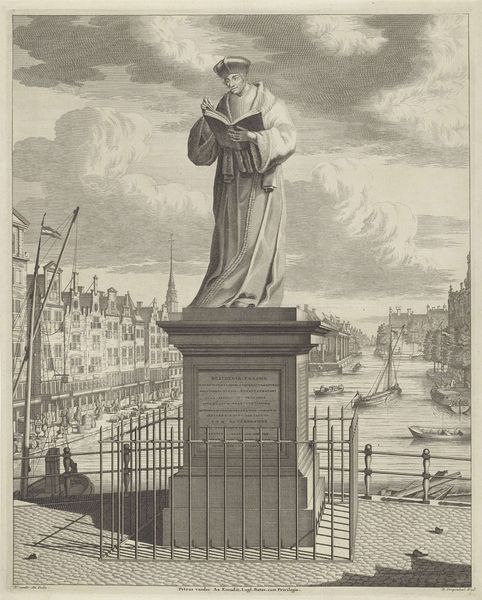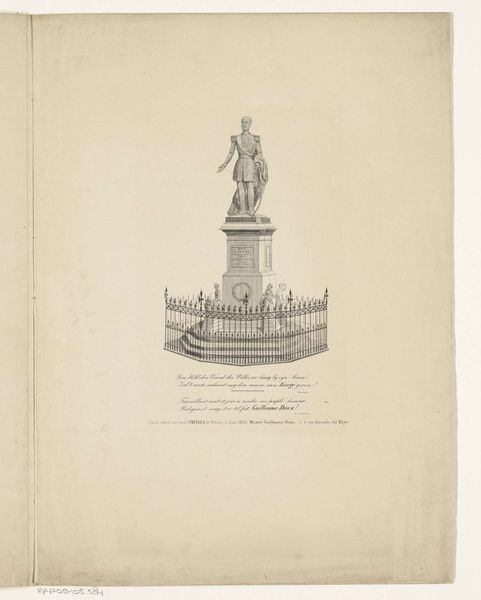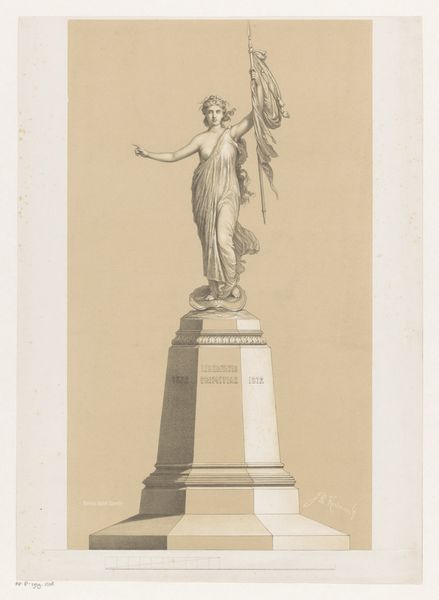
print, metal, sculpture, engraving
#
portrait
# print
#
metal
#
old engraving style
#
sculpture
#
history-painting
#
academic-art
#
engraving
Dimensions: height 226 mm, width 166 mm
Copyright: Rijks Museum: Open Domain
Editor: Here we have an engraving from the period of 1856-1882, entitled "Statue of Laurens Jansz. Coster." It’s a striking print – what’s your take on its historical context? Curator: It's an interesting example of 19th-century historical representation. The choice to depict Coster, who is credited by some with the invention of printing in the Netherlands, speaks to the growing sense of national identity at the time. How does the monument itself contribute to that idea? Editor: Well, the placement of a statue suggests importance, but it also feels like there's a claim being staked, particularly in relationship to claims made for Gutenberg's invention of the printing press. It looks like academic art but I'm wondering why making it a print instead of, well, an actual statue. Curator: Exactly. The circulation of this image through print elevates its impact, transforming it into a potent piece of public imagery, but it allows to make it mobile, to have many copies in different households and other public places. Who is it serving to honor? What political agendas might it fulfill? Editor: It would have the political purpose of cementing Coster as a Dutch hero and reminding people of Dutch achievements. Were monuments like this typically circulated as prints at the time? Curator: Yes, the reproduction and distribution of such images played a role in constructing collective memory and promoting specific historical narratives. What do you notice about the people looking at the monument? Editor: It shows the monument is there for people to visit and see; it’s very public, and meant to inspire national pride. Seeing it like this helps me think about how public art and accessible media work hand-in-hand to shape our understanding of history. Curator: Precisely. Thinking about its reproduction and reception, how do we continue to grapple with its meaning today, beyond the figure depicted?
Comments
No comments
Be the first to comment and join the conversation on the ultimate creative platform.
